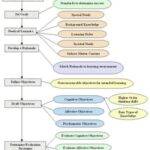In the field of education, the most detrimental part is the planning before a lesson. An educator designs their lessons in a systematic way in order to meet the needs of their students. Systematic instructional design is “analyzing human performance problems systematically, identifying the root causes of those problems, considering various solutions to address the root causes, and implementing the solutions in ways designed to minimize the unintended consequences of corrective action”(Rothwell & Kazanas, 2003, p. 2). Every year a teacher receives new students that they do not know, but are expected to learn state standards for their grade level. In order to reach this goal, teachers need to use systematic instructional design. Teachers need to assess their students’ performance in order to understand which areas are their strengths and which areas are their weaknesses. Addressing preexisting problems immediately ensures that the teacher can make progress during the school year.
Businesses often use systematic instructional design, but in the education field, every educator uses it. In businesses, it allows managers to understand why areas are not as productive as they need to be and to rectify the situation. According to Rothwell and Kazanas, “the chief aim of instructional design is to improve employee performance to increase organizational efficiency and effectiveness” (2003, p.3). Being able to pinpoint performance problems allows educators to teach students the information that they are their weaknesses. Solving performance problems with students is not as easy to pinpoint or to solve though.
We commonly recognize performance as the ability to reach a goal successfully. There are three areas of performance: human, machine, and company. While machine and company performance directly relate to businesses, human performance directly relates to education. American culture recognizes individual performance and students strive to meet their goals. The challenge for educators is to help students make personal performance gains.
There a two models for systematic instruction: comprehensive performance model and situation performance specific model. The comprehensive model examines factors that occur daily in an environment that affect performance. Situation performance specific model examines problems that have existed previously that are the underlying issues for performance problems. These models explain why people or businesses are not achieving the success that thy desired.
The comprehensive model looks at every possible factor that could affect performance within an organized setting. In a school setting, so many factors can affect a child’s performance. The school environment can affect students’ performance if the area or people do not work well with each other. If the material presented to students is at a level that is frustrating for the students, this affects the students’ performance level. Working in groups may affect students’ performance because they do not have the cooperation skills or because they lack the organization skills.
The second model is a situation performance specific model. In this model, they focus on one of five factors. Rothwell and Kazanas inform us the five factors are, “(1) the job situation, (2) the performer, (3) the behavior, (4) the consequence, and (5) the feedback of the consequence back to the performer”(Rothwell & Kazanas, 2003, p. 16). These preexisting problems are not as easy to rectify because they are deep rooted. Self-esteem is an issue that causes many students to doubt themselves and score poorly in school. Behavior is another large performance inhibitor. Students learn negative behavior from older siblings who are gang members or from others in their neighborhoods. These behaviors cause immense distractions in the class. The students with disruptive behavior are often acting up to gain attention because they have many underlying problems. Students are experiencing adult issues, such as drug abuse and sex at younger ages, due to these issues, the students have so many more factors that can keep them from performing to the best of their ability.
Teachers use systematic instructional design to help ensure that people, machines, or companies continue to reach their performance goals. Businesses hope to increase productivity in order to increase their revenue. Educators hope to help their students reach state standards. Teachers do not have a class of students who are all at the same level; therefore, they need to know which students that will need extra attention and which students may need the activity made more challenging. Teachers can also use instructional design to make sure that the classroom environment is sufficient for the students. Instructional design helps teachers to know which students can work well in groups and which students work more efficiently in pairs or individually. It can allow the teacher to know if the classroom environment is comfortable, so the students can learn the most they can. Instructional design allows teachers to give their students the best education they can get.
It is pertinent for educators to include systematic instructional design as we plan for the school year. Educators need to assess students’ backgrounds and students’ past test scores before the school year begins. This allows teachers to understand which students need extra help in certain areas and which students need extension activities. Instructional design allows teachers to fill the exact needs of students and to make lessons that will help all students. The challenge of being an educator is meeting the needs of all the students placed in the classrooms.
ReferenceRothwell, W. & Kazanas, H.C. (2003). The Role of Instructional design in solving performance problems. John Wiley and Sons Inc. Retrieved May 31, 2007 from University of Phoenix ecampus site


